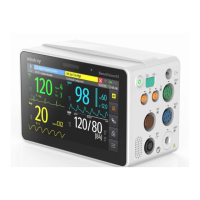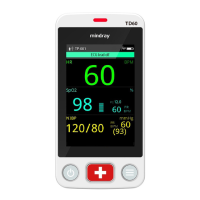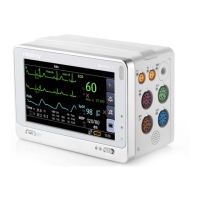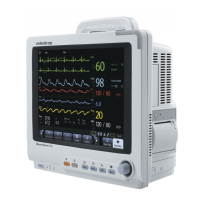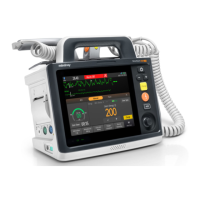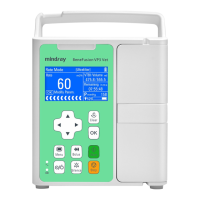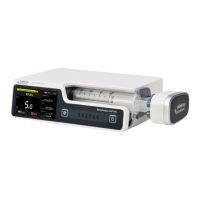31 - 4 BeneVision N Series Patient Monitor Operator’s Manual
31.6.3 Applying the rSO
2
Sensor
Follow this procedure to apply the rSO
2
sensor to patient:
1. Remove the protective backing label from the adhesive side of the sensor and apply the sensor to the skin.
2. Continue applying the sensor by smoothing it to the skin from the center outward. Ensure edges of the
sensor are sealed to prevent light from entering.
• The sensor is designed for single use only and can not be reused. Reuse may cause inaccurate
readings, erratic readings, or no readings at all. Also, reuse may cause an increased risk of cross-
contamination among patients.
• The sensor is designed for external use only as described in the instructions. Do not use the sensor
internally for any reason.
• Do not place the sensor on regions with severe tissue edema to reduce the possibility of skin lesions.
• Do not autoclave or gas sterilize the sensor.
• Use care when placing orremoving sensor. Do not place on broken or undeveloped skin.
• For extended monitoring, it is recommended to use a new sensor every 24 hours or if adhesive is
inadequate to seal the sensor to the skin.
• To avoid pressure sores do not apply external pressure (e.g. headbands, wraps, tape to sensor.
31.6.4 Connecting the rSO
2
Parts
1. Connect Preamplifier(s) to the rSO
2
module. Align red dot on the silvery connector of the Preamplifier with
red dot on rSO
2
cable connector.
2. Connect the following devices as per patient category:
◆ For neonatal patients, connect the neonatal sensor directly to the Preamplifier.
◆ For pediatric or adult patients, a reusable sensor cable is needed for the connection of the
Preamplifier and the sensor. Use color-coding when connecting the Preamplifier and the reusable
sensor cable.
• Different sensors (adult, pediatric and infant/neonatal) cannot be used simultaneously on the same
monitor. Cerebral sensors can be used with somatic sensors on the same monitor.
(1) rSO
2
module (2) Preamplifier (3) Reusable sensor cable
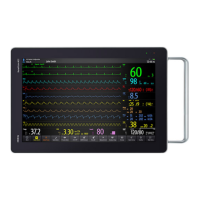
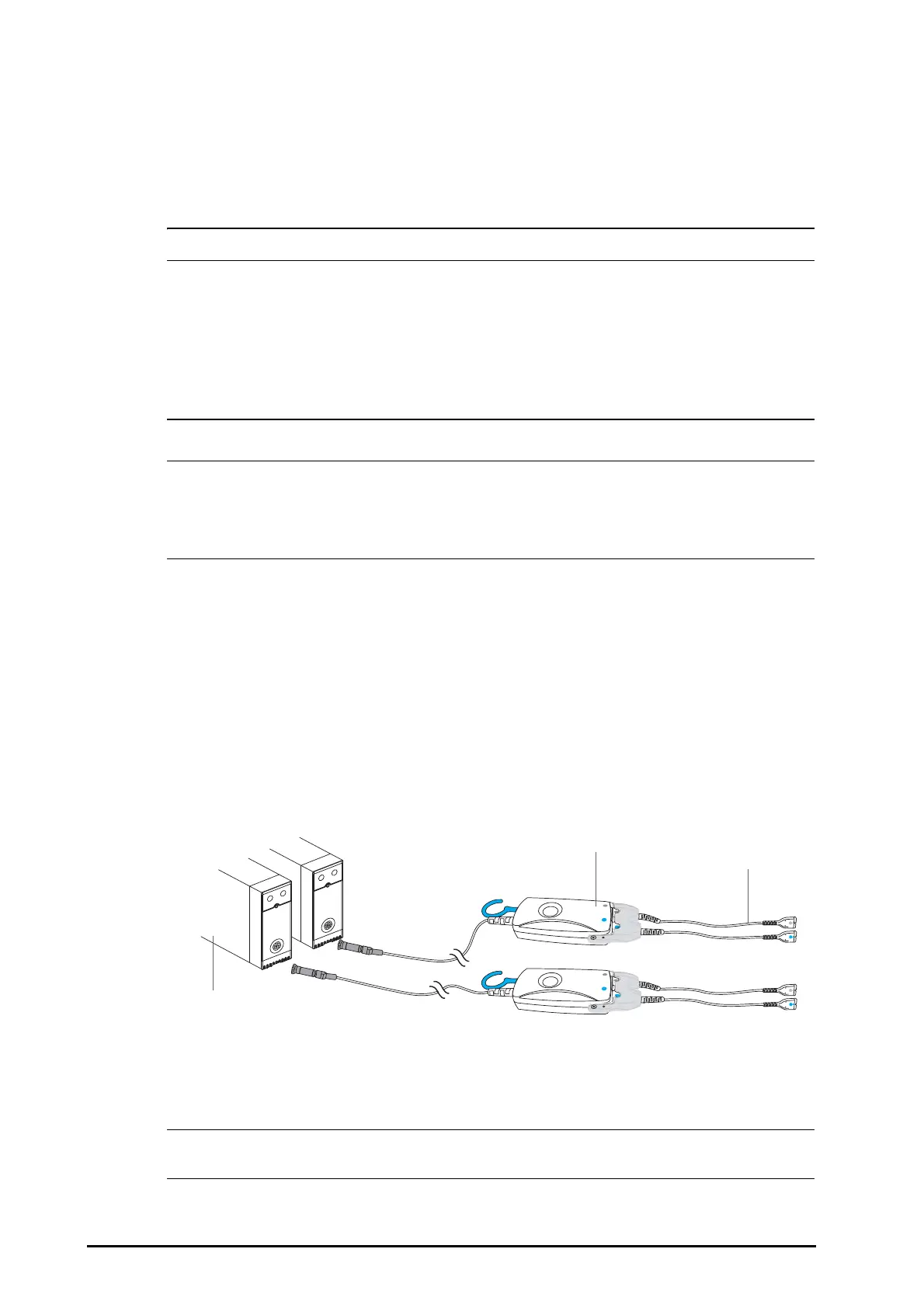